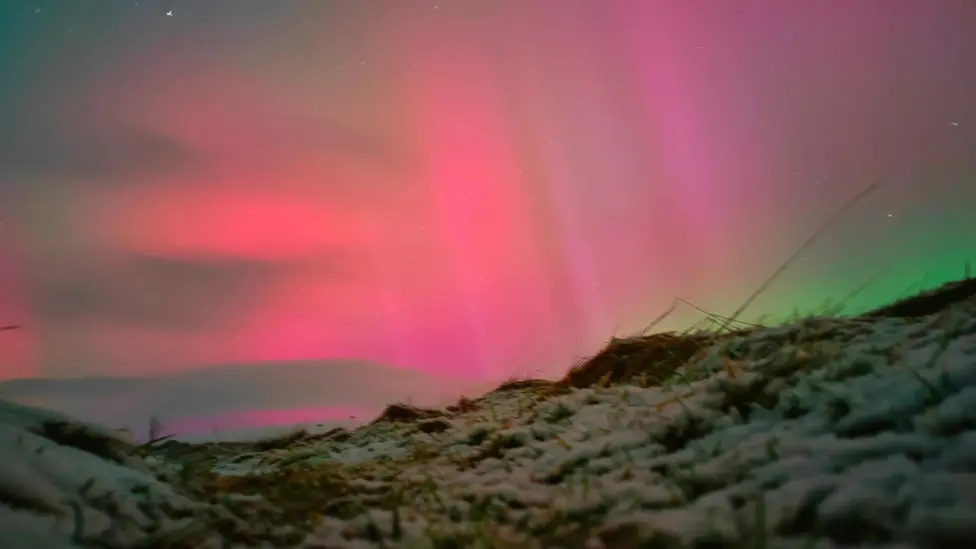The new year has begun with a spectacular natural phenomenon, as the northern lights, or aurora borealis, lit up the skies across various parts of the United Kingdom in their first major appearance of 2025. This celestial display, characterized by vibrant streaks of green, purple, and red dancing across the horizon, captivated observers and sparked excitement among scientists and skywatchers alike.
A Rare Treat for the UK
The aurora borealis is often associated with polar regions like Norway, Iceland, and Canada. However, under certain conditions, this phenomenon can extend farther south, creating rare opportunities for countries like the UK to witness its beauty. The aurora is caused by solar particles colliding with the Earth’s magnetic field, creating shimmering lights when these energetic particles interact with atmospheric gases.
This particular display was triggered by a geomagnetic storm resulting from a significant coronal mass ejection (CME) on the sun. Space weather experts had issued warnings about the heightened likelihood of auroras over the past few days, but the intensity of the event exceeded many expectations.
Locations and Experiences
Reports of the aurora came from across the UK, with some of the most vivid sightings in Scotland, northern England, and parts of Northern Ireland. In remote areas with little light pollution, the auroras painted the sky with breathtaking colors. Even in urban areas, where light pollution often obscures celestial phenomena, faint glimpses of the spectacle could be seen.
Social media platforms were flooded with images and videos of the event, as both professional photographers and amateur stargazers captured the ethereal lights. For many, the experience was deeply emotional, a moment of connection with nature’s grandeur.
Expert Insights
Scientists emphasized the significance of the event, noting that the sun is approaching a peak in its 11-year solar cycle. Increased solar activity during this phase leads to more frequent and intense geomagnetic storms, making it a particularly exciting time for aurora enthusiasts.
Dr. Eleanor Hart, a leading astrophysicist, remarked, “The aurora borealis is not just a visual marvel; it’s a tangible reminder of the dynamic relationship between our planet and the sun. The interplay of magnetic fields and solar wind creates a mesmerizing display that is both scientifically fascinating and profoundly beautiful.”
Tips for Aurora Viewing
For those eager to catch future displays, experts recommend keeping an eye on space weather forecasts. Apps and websites dedicated to aurora tracking can provide real-time updates on geomagnetic activity and aurora visibility. To enhance the experience, heading to dark, open areas away from city lights and being patient are key.
While no one can predict exactly when the next display will occur, the current solar cycle suggests there will be more opportunities in the coming months. For now, the dazzling lights of this event will remain etched in the memories of those lucky enough to have seen them.
A Bright Start to the Year
As 2025 unfolds, this extraordinary auroral display serves as a reminder of the wonder and unpredictability of nature. For a brief moment, people across the UK looked up in collective awe, their lives momentarily illuminated by the celestial dance of light.

 Fashion4 months ago
Fashion4 months ago
 Sports5 months ago
Sports5 months ago
 Fashion4 months ago
Fashion4 months ago
 Learning3 months ago
Learning3 months ago
 News3 months ago
News3 months ago
 Technology5 months ago
Technology5 months ago
 News4 months ago
News4 months ago
 Hot News2 months ago
Hot News2 months ago









